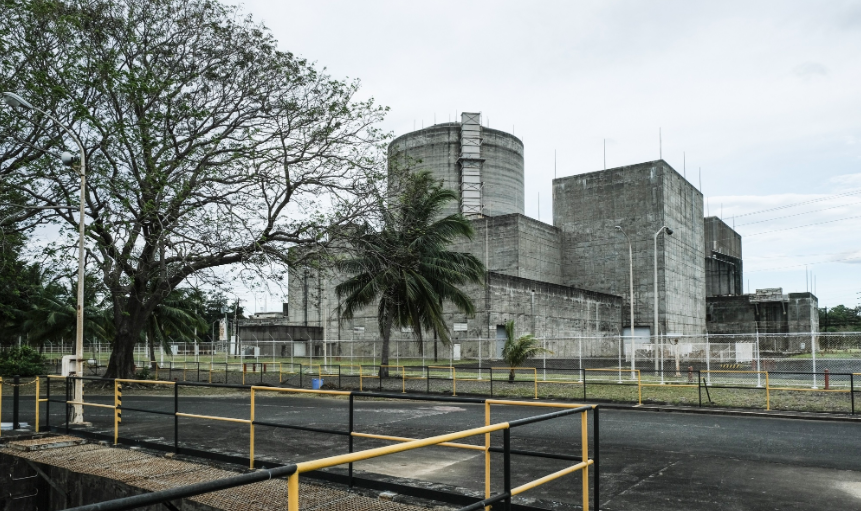With the leadership of President Ferdinand Marcos Jr., dreams of finally having a nuclear power plant supporting the country’s urgent need for more energy are on board again. This was verified by Energy Undersecretary Sharon Garin in a recent interview. She digressed, “A decision on whether to commission the plant “can be done soon enough,” possibly within Marcos’s six-year term, “We are not discarding the Bataan plant, but we have to make sure that it’s safe to revive,” she added. Current plans are that government will hire a third-party evaluator to assess the condition of the Bataan Nuclear Power Plant.

By having this functioning, the current size’s near peak capacity will enable energy generation that’s 5% of the Philippines’ power needs in a year. Construction of the plant was initiated by the current president’s father, former dictator Ferdinand Marcos while the oil crisis was at its peak in the 1970s. If the Bataan Nuclear Power Plant will move forward, it will still be the first one in Southeast Asia to do so.
Construction has been completed back in 1984 but it has not produced a single watt of electricity. This was the time when the country was experiencing changes and there was strong movement and protest against the plant to even give it a go. There were doubts about how stable the 620-megawatt facility was casting corruption as one of the strongest reasons why the quality of its construction has been in question for the past 38 years. Marcos was ousted by 1986 and all six presidents who came afterward were unanimous against opening the plant again amidst nuclear disasters seen, geological conditions prone to earthquakes, local politics and court cases as reasons to do so.
Main Drivers for considering nuclear power: War and Climate Change
Back in 2019, the country uses petroleum and other liquids (45%), followed by coal (36%), natural gas (7%), non-hydropower renewables (7%), and hydroelectricity (4%). But the shortage of gas caused by the Ukraine war pushed coal at currently 60% with petroleum now reduced to 17% due to current circumstances.
Global warming is also a driver to get the country in stride and help alleviate the issue as well. Having the plant will produce carbon-free energy. Other countries are also warming up to nuclear power like China and India which are planning to build more reactors, French and Finland plan to restart some of their nuclear facilities and Japan as well as Korea removing anti-nuclear policies as initial steps to further step into tapping nuclear power in the near future.
Signs of the Phillippines changing its gait with nuclear power
Back in September at a Bloomberg TV interview, PBBM revealed his stance on nuclear power. “We’re looking at what’s the most attractive source of power generation,” Marcos said, “We need all we can get.”
He has also said that he wants the country to have at least one nuclear power plant. He did meet with South Korean President Yoon Suk-yeol to discuss possible cooperation on the Bataan plant.
There were also public opinion surveys conducted that showed a different stance among Filipinos on having nuclear facilities in the country. The June 2022 survey by PUBLiCUS shows 59% of Filipinos are in favour of building a nuclear plant. The Energy Department and pollster Social Weather Stations in 2019 showed 79% of respondents approved of reviving the Bataan facility.
Surprisingly, even folks living around the Bataan nuclear power plant are also in favour of having this fully functioning. One resident, Emily Miguel, 54, who runs a store nearby, believes that doing so will help with the local economy, too. “If anything bad happens with the plant, we can just evacuate then, but we need jobs now,” she said.
Pressing need for Energy
Even though the study by Korean Hydro and Nuclear Power Company has tagged a price tag of USD 1 billion for getting the Bataan Nuclear Power Plant up and running, it’s still not the only consideration that weighs heavily on the issue.
Despite a handful of workers being employed to maintain the structure, the four decades of being dormant have taken their toll. The facade shows streaks of rust and crumbling concrete. The equipment inside is still in its analog state and needs to be updated.
Other proposals would be building a new plant altogether or waiting for viable technology to have small modular reactors instead of the current size of one nuclear power plant.
There are still ready alternatives that are far safer than nuclear power. For example, the growing solar sector is already at the same level of affordability and accessibility as coal by the end of the decade. Billionaire Enrique Razon announced back in June 2022 that his company, Terra Solar will be building a solar farm that can generate between 2,500 megawatts to 3,500 megawatts of electricity.
I would rather stick with sources of energy that are far from nuclear plants. After all, a possible nuclear plant meltdown is higher considering that our country is along the ring of fire. Are we as ready as Japan for such a disaster? I’d rather bet on solar energy. It’s safe to say we get the sun’s rays most of the year and can definitely tap into it without much hesitation and worry at the back of our minds.
Any thoughts? We look forward to hearing from you guys. Any comment, reaction, insight, or suggestions are welcome and duly noted here on our end. Cheers!
